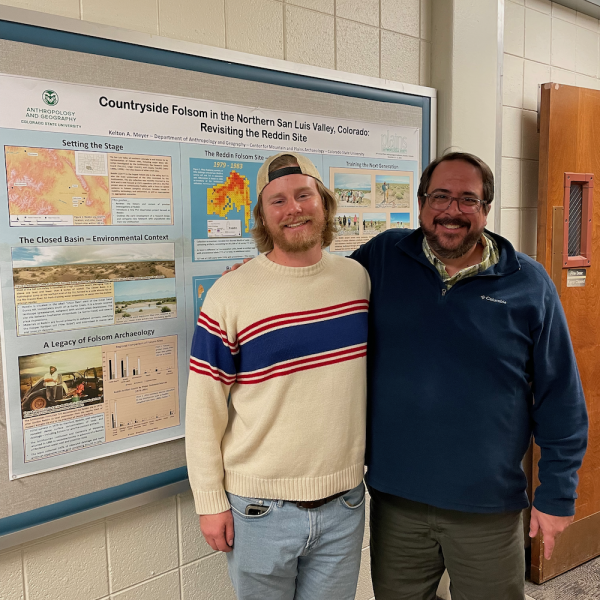Release the lichen!
CSU Anthropology doctoral candidate Kelton Meyer shows the power of lichen for dating archaeological sites in new study
August 7, 2023
Joshua Zaffos

CSU Anthropology doctoral candidate Kelton Meyer is enlisting some tiny organisms in the grand challenge of dating hunting sites in the Southern Rocky Mountains. In a new, open-access article in the peer-review journal, Radiocarbon, Meyer suggests that Rhizocarpon lichens — those electric-Kool-Aid colored, symbiotic patches of part-fungus-part-alga that grow on rocks — are an underused tool for determining the age of stone structures built by hunter-gatherers in the Colorado mountains.
Native Americans in Colorado, going back centuries and millennia, constructed networks of stone animal traps and other structures in the alpine tundra where there is minimal cover. Archaeologists can identify rock fences, hunting blinds, and cairns in the high country. But establishing the age of site construction events over time is difficult.
“People often assume that the high country was hardly used in the past because of the harsh terrain and the snow, ice, and rain,” Meyer says, “but these sites are a testament to the importance of Colorado’s alpine environment for peoples living along the Front Range hundreds and thousands of years ago.”
Meyer has put in the miles to ground-truth that idea. Since 2016, he has been leading field research in protected alpine wilderness areas across Colorado, working with Professor Jason LaBelle and the Center for Mountain and Plains Archaeology. Working in the backcountry and other lands, Meyer and colleagues have surveyed areas used for game drives and hunts and recovered animal remains, artifacts, and frozen materials – ultimately dating as far back as 9,000 years ago. Study areas have spanned northern Colorado’s high country, including Rollins Pass in Boulder County, ice patches in Rocky Mountain National Park, and the Rawah Wilderness near Cameron Pass.
“These sites are a major feat of landscape engineering and prove that hunter-gatherers in Colorado established key places to use and return to during their annual and semi-annual mobility rounds,” Meyer says.
But determining precisely how far back in time people were moving through and building in alpine regions has remained a cloudy proposition. Stone features are notoriously difficult to date, Meyer says, because rocks do not typically contain materials that can be dated directly with most scientific methods. As a result, archaeologists often date sites in the alpine using artifacts found on the surface, which can be problematic since people lived and worked in the same areas for different reasons across time. Amid these gaps in knowledge, Meyer looked to lichens.
“Out of necessity, I turned to the fields of biology and geology,” Meyer says. “In this case, how lichen growth patterns can change radically following stone-feature construction events in the distant past.”

Due to lichens’ long lives and predictable patterns of colonizing rock, the size of a particular colony of lichen can serve as an indirect measurement of time, dating to when a host rock was moved or placed. Known as “lichenometry,” the technique could be particularly useful for dating construction and recognizing periods of greater activity at sites above treeline where other biological and natural indicators used to measure time are less common.
Based on his review of lichen growth at high-altitude animal traps around Colorado, Meyer says lichenometry should be more widely used and can complement radiocarbon dating and other archaeological evidence.
“Lichenometry can help us isolate when stone feature construction began, and when peoples of the past chose to create monumental hunting sites and significantly alter or engineer the landscape,” Meyer says.
The study is open access and available for free to all researchers.